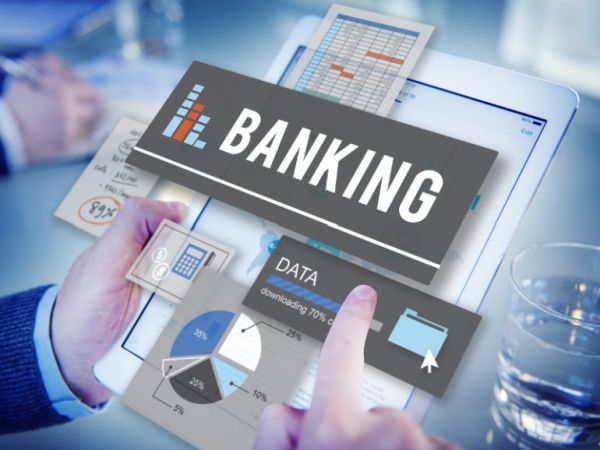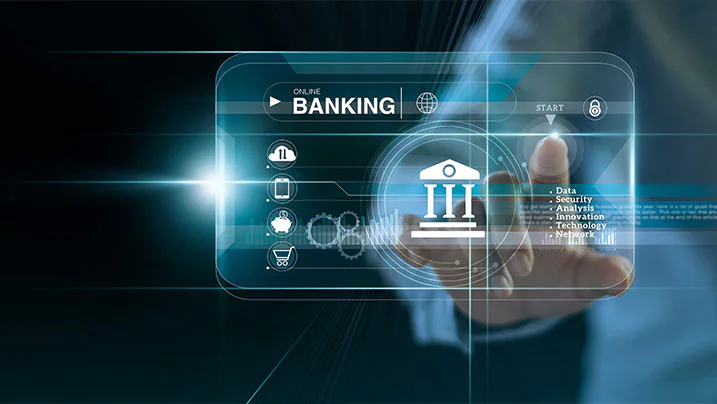Digital banking has revolutionized the way we manage our finances. With the advancement of technology, traditional banking methods are rapidly being replaced by digital solutions. In this article, we will delve into the concept of digital banking, explore its evolution, discuss the factors driving its shift, examine the benefits it offers, and address potential challenges that come with it. Moreover, we will ponder upon the future outlook of digital banking and its impact on traditional banking institutions.
Understanding the Concept of Digital Banking
In order to comprehend the significance of digital banking, we must first define what it entails. Digital banking refers to the use of electronic channels, such as websites, mobile applications, and online platforms, to conduct various financial transactions and manage banking activities. It encompasses a wide range of services, including online account access, fund transfers, bill payments, loan applications, and financial planning tools.
The concept of digital banking has evolved significantly over time, adapting to meet the changing needs and preferences of consumers. Let us delve into its evolution to better understand its current state.
Defining Digital Banking
In its early stages, digital banking simply meant accessing bank accounts and conducting transactions through online platforms. However, as technology progressed, digital banking evolved to offer more advanced features and services to customers. Today, it encompasses a comprehensive range of financial services that can be accessed anytime, anywhere.
One of the key aspects of digital banking is the convenience it provides. Customers no longer have to visit physical bank branches during limited operating hours to perform basic transactions. With digital banking, they can access their accounts and manage their finances from the comfort of their own homes or while on the go.
Furthermore, digital banking has also enhanced the security measures in place to protect customers’ financial information. Advanced encryption techniques and multi-factor authentication methods have been implemented to ensure the safety of online transactions. This has significantly reduced the risk of fraud and unauthorized access to accounts.
The Evolution of Digital Banking

Digital banking has come a long way from its humble beginnings. It started with basic online banking services, allowing customers to view account details and perform transactions through their computers. As smartphones became mainstream, mobile banking apps emerged, enabling users to access their accounts on-the-go.
With the advent of mobile banking apps, customers gained even more convenience and flexibility in managing their finances. They could check their account balances, transfer funds, and pay bills with just a few taps on their smartphones. This shift towards mobile banking also opened up new opportunities for financial inclusion, as individuals who previously did not have access to traditional banking services could now participate in the digital economy.
Moreover, the integration of artificial intelligence and machine learning has paved the way for personalized banking experiences. Customers can now receive tailored financial advice, predictive analytics, and recommendations based on their spending habits. This level of customization not only enhances the overall banking experience but also helps individuals make more informed financial decisions.
The rise of fintech companies has further fueled the innovation and expansion of digital banking services. These companies leverage technology to provide specialized financial services, such as peer-to-peer lending, robo-advisory, and digital wallets. Their agile and customer-centric approach has disrupted the traditional banking landscape, forcing established banks to adapt and offer more competitive digital solutions.
In conclusion, digital banking has transformed the way we manage our finances. It has evolved from basic online banking services to a comprehensive suite of financial tools and services that cater to the needs of modern consumers. With its convenience, security, and personalized experiences, digital banking is set to continue shaping the future of the banking industry.
The Shift Towards Digital Banking
A number of factors have contributed to the growing popularity of digital banking. Understanding these drivers is crucial in comprehending the extent of its impact.
Factors Driving the Shift
One of the primary drivers behind the shift towards digital banking is the increasing consumer demand for convenience and flexibility. Digital banking eliminates the need for physical visits to branches, enabling customers to perform transactions at their convenience. This has become particularly relevant in recent years as the COVID-19 pandemic necessitated social distancing measures.
Additionally, the prevalence of smartphones and internet connectivity has made digital banking accessible to a larger portion of the population. With more people having access to mobile devices, the adoption of digital banking services has witnessed a rapid surge.
The Role of Technology in Digital Banking

Technological advancements have played a pivotal role in shaping the digital banking landscape. The development of secure and robust online platforms, coupled with advancements in encryption and authentication technologies, has bolstered the security of digital banking transactions. This has instilled confidence in customers and has been a crucial driver in the shift towards digital banking.
Furthermore, the integration of machine learning algorithms and AI-powered chatbots has enhanced customer interactions and improved service quality. The ability to provide prompt and personalized support has significantly contributed to the growing popularity of digital banking.
Benefits of Digital Banking
As the adoption of digital banking continues to grow, it is important to explore the various benefits it offers to consumers.
Convenience and Accessibility
One of the most prominent advantages of digital banking is the convenience it provides. With digital banking services, customers can perform transactions and access their accounts at any time, from anywhere in the world. Whether it is transferring funds, paying bills, or monitoring account activities, everything can be done with just a few clicks or taps on a smartphone.
Moreover, digital banking eliminates the need for physical visits to branches, saving customers valuable time and effort. This convenience factor has made digital banking an attractive option for individuals with busy lifestyles.
Cost-Effectiveness of Digital Banking
Digital banking eliminates numerous costs associated with traditional banking methods. For instance, customers no longer need to bear the expense of traveling to physical branches or writing checks.
Furthermore, digital banking reduces the need for paper-based transactions, resulting in lower costs and a positive environmental impact. With digital documents and electronic statements, not only does it save money on paper and printing, but it also minimizes the carbon footprint in the long run.
Enhanced Security Measures
Contrary to common misconceptions, digital banking offers robust security measures to safeguard customer information and transactions. Banks invest heavily in state-of-the-art security technologies to protect customer data from unauthorized access and fraudulent activities.
The use of encryption techniques, multi-factor authentication, and biometric identification has significantly enhanced the security of digital banking transactions. With continuous advancements in security technologies, the risks associated with digital banking are being effectively mitigated.
Potential Challenges of Digital Banking
While digital banking offers numerous advantages, it also comes with its fair share of challenges. Understanding and addressing these challenges is crucial for the continued development and success of digital banking.
Overcoming Technological Barriers
Not everyone has easy access to technology or the internet. This digital divide poses a challenge to the widespread adoption of digital banking services. To overcome this barrier, it is imperative for banks and fintech companies to focus on improving access to technology in underserved areas and provide user-friendly platforms that cater to users with limited technological literacy.
Addressing Security Concerns
While security measures for digital banking have improved significantly, concerns about data breaches and identity theft still linger in the minds of some customers. Banks must prioritize maintaining robust security frameworks and educate customers about the precautions they can take to protect their personal information and accounts.
Combating the persistent threat of cyberattacks requires constant vigilance and investment in advanced security technologies.
The Future Outlook of Digital Banking
The future of banking lies in digital solutions, and digital banking is poised to continue its rapid growth. Let us explore what the future holds for digital banking and how it will impact traditional banking institutions.
Predicted Trends in Digital Banking
One emerging trend in digital banking is the integration of cutting-edge technologies such as blockchain and decentralized finance (DeFi). These technologies have the potential to revolutionize the financial landscape by providing secure, transparent, and efficient services.
Furthermore, as artificial intelligence continues to advance, we can expect further advancements in personalized customer experiences and predictive analytics. AI-powered chatbots, voice recognition, and virtual assistants will become more prevalent, enabling smoother and more efficient interactions between customers and banks.
The Impact on Traditional Banking Institutions
The rise of digital banking has undoubtedly disrupted traditional banking institutions. To stay competitive, traditional banks must embrace digital transformation and invest in innovative technologies. They need to adapt their business models and provide seamless digital experiences to meet evolving customer expectations.
However, as traditional banks embrace digital banking, they also have the opportunity to leverage their existing infrastructure and customer base. By combining the strengths of traditional banking with the convenience and innovation of digital services, they can carve out a unique position in the digital banking landscape.
Conclusion
In conclusion, digital banking has revolutionized the way we manage our finances. It offers unparalleled convenience, improved accessibility, cost-effectiveness, and enhanced security measures. Although challenges such as the digital divide and security concerns exist, digital banking is undeniably the future of banking.
As technology continues to evolve, we can expect digital banking to further expand its capabilities and offer even more personalized and efficient services. Traditional banking institutions must adapt and embrace digital transformation to remain relevant in this rapidly changing landscape. Ultimately, the benefits of digital banking outweigh the challenges, and it is up to us as consumers to embrace the opportunities it presents.




